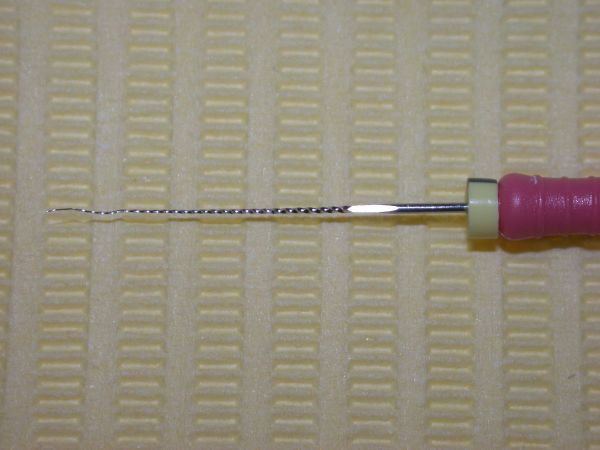
InformationPrimary endodontic treatment Endodontic retreatment Special treatments Endodontics step by stepProduct catalogueOrder and payment information Previous special offers Hand instruments Rotary instruments Operating Microscope General instruments Accessoires Filling materials MiscellaneousRemainingReferences Site map Presentations (RECOMMENDABLE!) Downloads Het Kanaal Links Endoplaza Forum MarketPlaza About Endoplaza Instructions for use website
|
File systemsThe various kinds of file systems are: < C+ Files
|

|
Tip: Specially rotating NiTi files can break. Never go into a canal with a rotating file where a handfile nr. 15 to the apex has not yet been. Where do these files break? In most cases in the mesial canals of the lower molar or in the mesiobuccal canals of the upper molar. Why do they break there? Because canal curvings from buccal to palattinal/lingual are difficult to see, whereas the canals in question regularly have contact apically (curving towards each other). How can the break be prevented? By opening widely from the pulpa chamber in order to maintain regular access to the apex with a hand file and by rinsing at regular intervals. What to do when a file breaks nevertheless? See the earlier mentioned movie on this page. |
ProTaper

Rotating instrumentarium should only be used where hand files have already been. The pulpa chamber has to contain sufficient Hypochlorite. Rotating files are then cleaned in the liquid through centrifugal power. ProTaper is an active filing system. De S-files are used with a brushing movement. The F-files are used in a flowing movement to apical.
Presentation
Brochure
Manual






